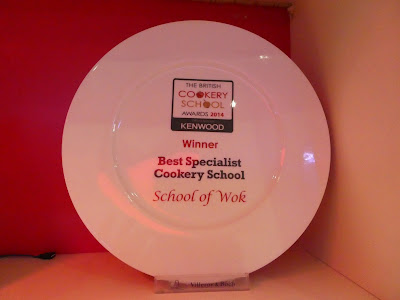It seems like
only days since I compiled last month’s Favourites List. The old tempus has
definitely fugit! I have been very busy at work as the academic year is in full
swing and the course I teach in steps up a gear. Time to spend on reading,
listening to music, going to gigs and eating out has been in scarce supply. My
students have been coping with an extensive workload and many demanding calls
on their time.
The clocks went
back as we adjust to “Winter time” and it always seems to take me time to adjust.
Short days, long nights are something I struggle with.
So this month’s
pictures are a reminder of this Summer, when the days were longer, the days
warm and I was discovering new horizons. Before our trip to Japan, I was
recommended the small town of Arashiyama as a great little day trip to make
from Kyoto by Kavey of the brilliant Kavey Eats food and travel blog. She told
me that I simply had to see the combination of bamboo, gardens, temples and
natural beauty to be found there. She even wrote it down for me with an excited
“LOVE THIS PLACE!” next to the name of the town.
Intrigued by
her enthusiastic recommendation, we had to check it out. The Bamboo Grove there
is a green haven of beauty, natural, man-made and maintained. The Tenryu-ji
monastery is a meditative and peaceful oasis, with a wonderful vegetarian
restaurant. The house of the actor Denjirō Ōkōchi at Ōkōchi
Sansō is a gorgeous traditional Japanese garden. Well worth a day’s excursion,
it was a place for inspiration and reflection.
I
hope you like the pictures which accompany this month’s collection of lovely
stuff.
Recipes:
Twice baked
butternut squash with parmesan, cream, bacon and hazlenuts. A glorious side
dish for Thanksgiving! http://www.epicurious.com/recipes/food/views/twice-baked-butternut-squash-with-parmesan-cream-and-candied-bacon
Lovely
vegetarian dry curry to eat with chapatis or paratha. Cauliflower And Peas
Bhaji With Low Spices (Dry Curry) - Gobhi (Phool) aur Matar ki Sabji: http://www.mamtaskitchen.com/recipe_display.php?id=10346
Pork loin with
pumpkin puree and pecorino. You can make the puree in advance for speed.
Another fab Diana Henry recipe: http://www.telegraph.co.uk/food-and-drink/recipes/pork-loin-with-pumpkin-pure-and-pecorino/
Squash time!
Butternut squash; braised, made into gnocchi and a squash mash from Yotam
Ottolenghi. https://www.theguardian.com/lifeandstyle/2016/nov/12/squash-pumpkin-recipes-yotam-ottolenghi-gnocchi-braised-mash-butternut-coquina-queen
Storecupboard
simple supper, comforting and pretty healthy. Pasta e Fagioli - pasta with
borlotti beans. https://food52.com/recipes/65020-pasta-e-fagioli-pasta-and-beans
Slow cooked
cubes of pork shoulder with apricot and tamarind for a Winter warmer: http://www.olivemagazine.com/recipes/entertain/slow-cooked-pork-apricot-and-tamarind-stew/
One pot cooking
is just brilliant; all the flavours combine, you get a simple to make dinner
and there isn't loads of stuff to wash up. Meat and grain one-pots by Yotam
Ottolenghi. https://www.theguardian.com/lifeandstyle/2016/oct/15/one-pot-recipes-meat-grain-lamb-rice-chicken-freekeh-beef-short-rib-barley-yotam-ottolenghi
I found this
recipe for Bonfire Night parties, but it can be enjoyed any time during the
Autumn and Winter; an Alpine inspired variation to classic British jacket
Spuds! http://www.bbcgoodfood.com/recipes/1759659/bonfire-night-baked-potatoes
Tom Kitchin’s
sausage casserole: sausages, tomatoes, white onion, bacon rashers and butter
beans. http://goodthingsmagazine.com/tom-kitchins-sausage-casserole/
Lentils with
pasta (Harak osbao), Bulgur with tomato, fried aubergine and cucumber yoghurt,
Chicken meatballs with molokhia, garlic and coriander; recipes from Yotam
Ottolenghi: https://www.theguardian.com/lifeandstyle/2016/oct/29/cook-for-syria-campaign-recipes-yotam-ottolenghi-chicken-meatballs-harak-osbao
Braised ribs
are so different from fried. The meat is soft, not stringy, and the true
flavour comes out. Being able to do the cooking in a slow cooker makes life
easy. https://www.yahoo.com/news/slow-cooker-short-ribs-worth-trouble-130123007.html
Mashbous,
Palestinian chicken with rice and spice plus a book review of Palestine On A
Plate: http://www.huffingtonpost.co.uk/linda-duffin/palestine-on-a-plate_b_12439426.html
Articles/Know
How:
A
"Which?" Magazine blind test scores Aldi's £10 Champagne better than
Laurent Perrier, Veuve Cliquot and Moet & Chandon. http://www.standard.co.uk/lifestyle/foodanddrink/this-999-bottle-of-aldi-champagne-has-been-voted-better-than-laurentperrier-veuve-clicquot-and-mo-t-a3398291.html
Din Tai Fung is
a Taiwan and Hong Kong institution. Their dumplings are cheap and divine. It is
fantastic news that they are looking to open in London: http://www.channelnewsasia.com/news/singapore/breadtalk-to-expand-din-tai-fung-chain-to-uk/3295618.html
A beginner's
guide to the wines of Bordeaux. By supperclub host, food author and blogger
Kerstin Rodgers: http://winetrust100.co.uk/bordeaux-for-dummies/
We all know
that it will soon be colds and flu season... Here is how to help protect
yourself.
Handy guide on
preparing different types of squash, gourd and pumpkin: http://www.huffingtonpost.com/2016/10/19/winter-squash-cut-peel_n_5959418.html
What you might
have missed at Snig's Kitchen:
Snigdha learns
basic Wok star moves with Chef Jeremy Pang! http://snigskitchen.blogspot.co.uk/2016/11/wok-cooking-101-with-chef-jeremy-pang.html
My review of
"the Dancing Chef" Natasha MacAller's Spice Health Heroes.
A novice's
guide to elements of food styling, as taught to me by Mademoiselle Poirot. http://snigskitchen.blogspot.co.uk/2016/11/food-styling-101.html
My other
writings:
My analysis on
the Uber drivers case. (By way of background: the Employment Tribunal has found
that Uber drivers should be classified as “workers”, meaning their claims for
the minimum wage, paid annual leave and whistleblowing can now be heard in full
[as the hearing was a preliminary one]). I consider the legal principles and
findings of fact by the tribunal. https://www.city.ac.uk/news/2016/november/uber-and-the-gig-economy-drivers-found-to-be-workers
My fuller
analysis piece on the Uber case in the Solicitors Journal: https://www.solicitorsjournal.com/feature/201611/uber-and-%E2%80%98gig%E2%80%99-economy?dm_i=23GR%2C4M72T%2CF5OMS3%2CH6M3G%2C1
Please note: as
with every monthly Favourites List, all of these items have been selected by me
simply because I love them. I do not receive any money, benefits in kind or
other incentive for posting these links or recommendations.


































